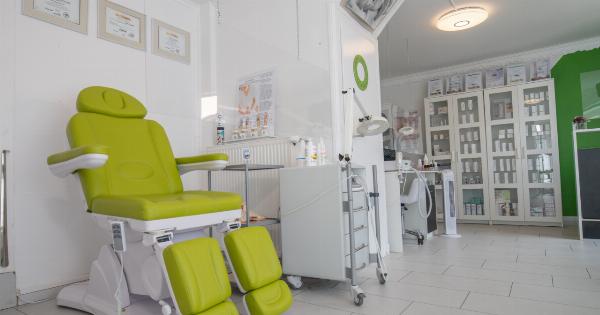As part of a woman’s healthcare routine, it is essential to schedule regular gynecological check-ups. These visits involve a range of tests and examinations that help to identify and treat any potential health issues.
While each woman’s medical needs differ, there is one test that every woman should undergo: a Pap smear.
What is a Pap Smear?
A Pap smear is an examination in which your healthcare provider takes a sample of cells from your cervix and tests them for abnormalities. The cervix is the lower part of the uterus that connects to the vagina.
An abnormal Pap smear can indicate certain conditions, such as inflammation, infection, or precancerous or cancerous cells.
Who Needs to Get a Pap Smear?
According to the American College of Obstetricians and Gynecologists (ACOG), women should get their first Pap smear at the age of 21. After that, it is recommended to have a Pap smear every three years until the age of 29.
At age 30, women should have a Pap smear with an HPV test every five years. Women who are over the age of 65 can stop having Pap smears if they have had regular screenings in the past and no abnormal results.
Women who have had a full hysterectomy (removal of the uterus and cervix) can also stop having Pap smears unless their hysterectomy was due to cancer.
Preparing for a Pap Smear
Preparing for a Pap smear is relatively simple. Your healthcare provider will likely suggest that you avoid intercourse, vaginal medications, and douching for 24-48 hours before your test.
You will also be asked to schedule the test for a time when you are not menstruating, as it can interfere with the results.
What Happens During a Pap Smear?
The Pap smear test is quick and painless. You will be asked to lie down on the examination table, put your feet in stirrups, and scoot down towards the edge of the table.
Your healthcare provider will insert a speculum into your vagina to hold the walls open. They will then use a small brush or spatula to collect a sample of cells from your cervix. The sample will be sent to a lab for testing. The whole process takes only a few minutes.
Interpreting Your Pap Smear Results
It can take up to two weeks to get your Pap smear results. Your healthcare provider will contact you to discuss the results, whether it came back as abnormal or normal.
It’s crucial to know that receiving abnormal results doesn’t necessarily mean you have cancer or other serious conditions. Instead, they generally signify that further testing is required.
Abnormal Pap smear results are typically classified into one of three categories:.
- Atypical squamous cells of undetermined significance (ASC-US): This means there are changes to your cervical cells that could possibly be related to HPV.
- Low-grade squamous intraepithelial lesion (LSIL): This shows that there are mild changes in your cervical cells that typically go away on their own but still warrant close monitoring.
- High-grade squamous intraepithelial lesion (HSIL): This means that there are significant changes in the cells of your cervix. HSIL can be precancerous cells or actual cancer cells.
What Happens If My Pap Smear is Abnormal?
If your Pap smear results return as abnormal, don’t panic. Abnormal Pap smear results don’t always mean cancer, and many cases of abnormal Pap smears do not lead to cancer.
Further testing is required, and your healthcare provider will discuss the next steps with you.
Depending on your results, your healthcare provider may request additional tests, including a colposcopy, where a closer examination of your cervix is done with a magnifying instrument, or a biopsy, where a small sample of tissue is removed for further examination.
The Importance of Pap Smears
Getting regular Pap smears is essential for maintaining good reproductive health. Cervical cancer is highly treatable if caught in its early stages through Pap smears.
Pap smears can also detect other cervical abnormalities that require management, such as inflammation or infection. Regular screening can significantly reduce the likelihood of developing cervical cancer.
Conclusion
If you are a woman over 21, it’s time to start scheduling your Pap smears regularly.
Developing a healthy habit of regular gynecological check-ups and Pap smear tests can detect any abnormalities early and provide timely treatment, ensuring reproductive and sexual health. Speak with your healthcare provider for more information on when to schedule your Pap smear and any other tests you might need.































